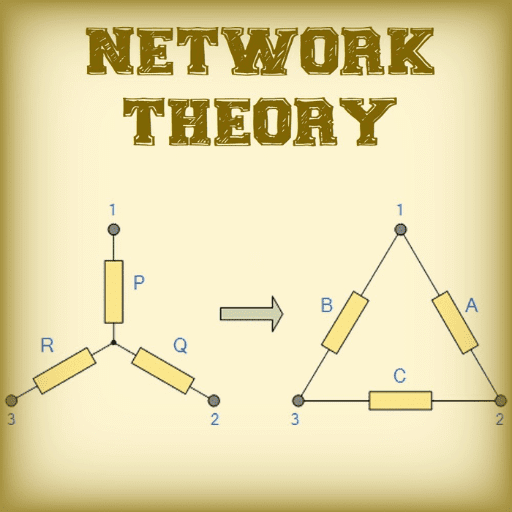Best Study Material for JEE Exam
JEE Exam > JEE Notes > Mathematics (Maths) Class 12 > NCERT Solutions - Linear Programming
Linear Programming NCERT Solutions | Mathematics (Maths) Class 12 - JEE PDF Download
| Download, print and study this document offline |
Please wait while the PDF view is loading
Page 1 NCERT Solutions for Class 12 Maths Chapter 12 – Linear Programming Exercise 12.1 page no: 513 1. Maximise Z = 3x + 4y Subject to the constraints: Solution: The feasible region determined by the constraints, x + y = 4, x = 0, y = 0, is given below. O (0, 0), A (4, 0), and B (0, 4) are the corner points of the feasible region. The values of Z at these points are given below. Corner point Z = 3x + 4y O (0, 0) 0 A (4, 0) 12 B (0, 4) 16 Maximum Hence, the maximum value of Z is 16 at the point B (0, 4). 2. Minimise Z = -3x + 4y subject to . Solution: Page 2 NCERT Solutions for Class 12 Maths Chapter 12 – Linear Programming Exercise 12.1 page no: 513 1. Maximise Z = 3x + 4y Subject to the constraints: Solution: The feasible region determined by the constraints, x + y = 4, x = 0, y = 0, is given below. O (0, 0), A (4, 0), and B (0, 4) are the corner points of the feasible region. The values of Z at these points are given below. Corner point Z = 3x + 4y O (0, 0) 0 A (4, 0) 12 B (0, 4) 16 Maximum Hence, the maximum value of Z is 16 at the point B (0, 4). 2. Minimise Z = -3x + 4y subject to . Solution: NCERT Solutions for Class 12 Maths Chapter 12 – Linear Programming The feasible region determined by the system of constraints, is given below. O (0, 0), A (4, 0), B (2, 3) and C (0, 4) are the corner points of the feasible region. The values of Z at these corner points are given below. Corner point Z = – 3x + 4y O (0, 0) 0 A (4, 0) -12 Minimum B (2, 3) 6 C (0, 4) 16 Hence, the minimum value of Z is – 12 at the point (4, 0). 3. Maximise Z = 5x + 3y subject to . Solution: The feasible region determined by the system of constraints, 3x + 5y = 15, 5x + 2y = 10, x = 0, and y = 0, is given below. Page 3 NCERT Solutions for Class 12 Maths Chapter 12 – Linear Programming Exercise 12.1 page no: 513 1. Maximise Z = 3x + 4y Subject to the constraints: Solution: The feasible region determined by the constraints, x + y = 4, x = 0, y = 0, is given below. O (0, 0), A (4, 0), and B (0, 4) are the corner points of the feasible region. The values of Z at these points are given below. Corner point Z = 3x + 4y O (0, 0) 0 A (4, 0) 12 B (0, 4) 16 Maximum Hence, the maximum value of Z is 16 at the point B (0, 4). 2. Minimise Z = -3x + 4y subject to . Solution: NCERT Solutions for Class 12 Maths Chapter 12 – Linear Programming The feasible region determined by the system of constraints, is given below. O (0, 0), A (4, 0), B (2, 3) and C (0, 4) are the corner points of the feasible region. The values of Z at these corner points are given below. Corner point Z = – 3x + 4y O (0, 0) 0 A (4, 0) -12 Minimum B (2, 3) 6 C (0, 4) 16 Hence, the minimum value of Z is – 12 at the point (4, 0). 3. Maximise Z = 5x + 3y subject to . Solution: The feasible region determined by the system of constraints, 3x + 5y = 15, 5x + 2y = 10, x = 0, and y = 0, is given below. NCERT Solutions for Class 12 Maths Chapter 12 – Linear Programming O (0, 0), A (2, 0), B (0, 3) and C (20 / 19, 45 / 19) are the corner points of the feasible region. The values of Z at these corner points are given below. Corner point Z = 5x + 3y O (0, 0) 0 A (2, 0) 10 B (0, 3) 9 C (20 / 19, 45 / 19) 235 / 19 Maximum Hence, the maximum value of Z is 235 / 19 at the point (20 / 19, 45 / 19). 4. Minimise Z = 3x + 5y such that . Solution: The feasible region determined by the system of constraints, x + 3y = 3, x + y = 2, and x, y = 0, is given below. Page 4 NCERT Solutions for Class 12 Maths Chapter 12 – Linear Programming Exercise 12.1 page no: 513 1. Maximise Z = 3x + 4y Subject to the constraints: Solution: The feasible region determined by the constraints, x + y = 4, x = 0, y = 0, is given below. O (0, 0), A (4, 0), and B (0, 4) are the corner points of the feasible region. The values of Z at these points are given below. Corner point Z = 3x + 4y O (0, 0) 0 A (4, 0) 12 B (0, 4) 16 Maximum Hence, the maximum value of Z is 16 at the point B (0, 4). 2. Minimise Z = -3x + 4y subject to . Solution: NCERT Solutions for Class 12 Maths Chapter 12 – Linear Programming The feasible region determined by the system of constraints, is given below. O (0, 0), A (4, 0), B (2, 3) and C (0, 4) are the corner points of the feasible region. The values of Z at these corner points are given below. Corner point Z = – 3x + 4y O (0, 0) 0 A (4, 0) -12 Minimum B (2, 3) 6 C (0, 4) 16 Hence, the minimum value of Z is – 12 at the point (4, 0). 3. Maximise Z = 5x + 3y subject to . Solution: The feasible region determined by the system of constraints, 3x + 5y = 15, 5x + 2y = 10, x = 0, and y = 0, is given below. NCERT Solutions for Class 12 Maths Chapter 12 – Linear Programming O (0, 0), A (2, 0), B (0, 3) and C (20 / 19, 45 / 19) are the corner points of the feasible region. The values of Z at these corner points are given below. Corner point Z = 5x + 3y O (0, 0) 0 A (2, 0) 10 B (0, 3) 9 C (20 / 19, 45 / 19) 235 / 19 Maximum Hence, the maximum value of Z is 235 / 19 at the point (20 / 19, 45 / 19). 4. Minimise Z = 3x + 5y such that . Solution: The feasible region determined by the system of constraints, x + 3y = 3, x + y = 2, and x, y = 0, is given below. NCERT Solutions for Class 12 Maths Chapter 12 – Linear Programming It can be seen that the feasible region is unbounded. The corner points of the feasible region are A (3, 0), B (3 / 2, 1 / 2) and C (0, 2). The values of Z at these corner points are given below. Corner point Z = 3x + 5y A (3, 0) 9 B (3 / 2, 1 / 2) 7 Smallest C (0, 2) 10 7 may or may not be the minimum value of Z because the feasible region is unbounded. For this purpose, we draw the graph of the inequality, 3x + 5y < 7 and check whether the resulting half-plane has common points with the feasible region or not. Hence, it can be seen that the feasible region has no common point with 3x + 5y < 7. Thus, the minimum value of Z is 7 at point B (3 / 2, 1 / 2). 5. Maximise Z = 3x + 2y subject to . Solution: Page 5 NCERT Solutions for Class 12 Maths Chapter 12 – Linear Programming Exercise 12.1 page no: 513 1. Maximise Z = 3x + 4y Subject to the constraints: Solution: The feasible region determined by the constraints, x + y = 4, x = 0, y = 0, is given below. O (0, 0), A (4, 0), and B (0, 4) are the corner points of the feasible region. The values of Z at these points are given below. Corner point Z = 3x + 4y O (0, 0) 0 A (4, 0) 12 B (0, 4) 16 Maximum Hence, the maximum value of Z is 16 at the point B (0, 4). 2. Minimise Z = -3x + 4y subject to . Solution: NCERT Solutions for Class 12 Maths Chapter 12 – Linear Programming The feasible region determined by the system of constraints, is given below. O (0, 0), A (4, 0), B (2, 3) and C (0, 4) are the corner points of the feasible region. The values of Z at these corner points are given below. Corner point Z = – 3x + 4y O (0, 0) 0 A (4, 0) -12 Minimum B (2, 3) 6 C (0, 4) 16 Hence, the minimum value of Z is – 12 at the point (4, 0). 3. Maximise Z = 5x + 3y subject to . Solution: The feasible region determined by the system of constraints, 3x + 5y = 15, 5x + 2y = 10, x = 0, and y = 0, is given below. NCERT Solutions for Class 12 Maths Chapter 12 – Linear Programming O (0, 0), A (2, 0), B (0, 3) and C (20 / 19, 45 / 19) are the corner points of the feasible region. The values of Z at these corner points are given below. Corner point Z = 5x + 3y O (0, 0) 0 A (2, 0) 10 B (0, 3) 9 C (20 / 19, 45 / 19) 235 / 19 Maximum Hence, the maximum value of Z is 235 / 19 at the point (20 / 19, 45 / 19). 4. Minimise Z = 3x + 5y such that . Solution: The feasible region determined by the system of constraints, x + 3y = 3, x + y = 2, and x, y = 0, is given below. NCERT Solutions for Class 12 Maths Chapter 12 – Linear Programming It can be seen that the feasible region is unbounded. The corner points of the feasible region are A (3, 0), B (3 / 2, 1 / 2) and C (0, 2). The values of Z at these corner points are given below. Corner point Z = 3x + 5y A (3, 0) 9 B (3 / 2, 1 / 2) 7 Smallest C (0, 2) 10 7 may or may not be the minimum value of Z because the feasible region is unbounded. For this purpose, we draw the graph of the inequality, 3x + 5y < 7 and check whether the resulting half-plane has common points with the feasible region or not. Hence, it can be seen that the feasible region has no common point with 3x + 5y < 7. Thus, the minimum value of Z is 7 at point B (3 / 2, 1 / 2). 5. Maximise Z = 3x + 2y subject to . Solution: NCERT Solutions for Class 12 Maths Chapter 12 – Linear Programming The feasible region determined by the constraints, x + 2y = 10, 3x + y = 15, x = 0, and y = 0, is given below. A (5, 0), B (4, 3), C (0, 5) and D (0, 0) are the corner points of the feasible region. The values of Z at these corner points are given below. Corner point Z = 3x + 2y A (5, 0) 15 B (4, 3) 18 Maximum C (0, 5) 10 Hence, the maximum value of Z is 18 at points (4, 3). 6. Minimise Z = x + 2y subject to . Solution: The feasible region determined by the constraints, 2x + y = 3, x + 2y = 6, x = 0, and y = 0, is given below.Read More
|
204 videos|290 docs|139 tests
|
FAQs on Linear Programming NCERT Solutions - Mathematics (Maths) Class 12 - JEE
| 1. What is linear programming? |  |
| 2. How is linear programming applied in real-life situations? |  |
Ans. Linear programming is commonly used in various fields such as business, economics, engineering, and logistics to optimize resource allocation, production planning, transportation scheduling, and more.
| 3. What are the key components of a linear programming problem? |  |
Ans. The key components of a linear programming problem include decision variables, objective function, constraints, non-negativity constraints, and feasibility region.
| 4. How is the optimal solution determined in linear programming? |  |
Ans. The optimal solution in linear programming is determined by solving the objective function while satisfying all the given constraints to maximize or minimize the objective.
| 5. What are some common methods used to solve linear programming problems? |  |
Ans. Some common methods used to solve linear programming problems include graphical method, simplex method, and computer software such as Excel Solver.
Related Searches

























